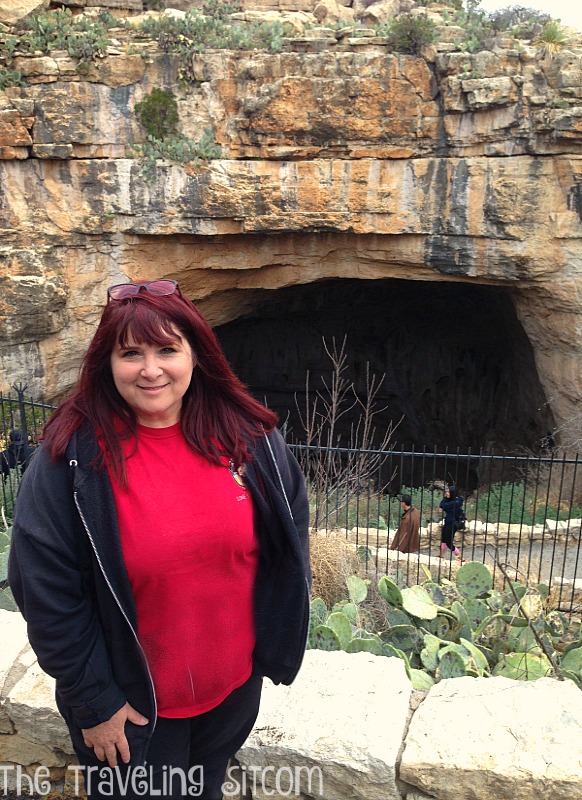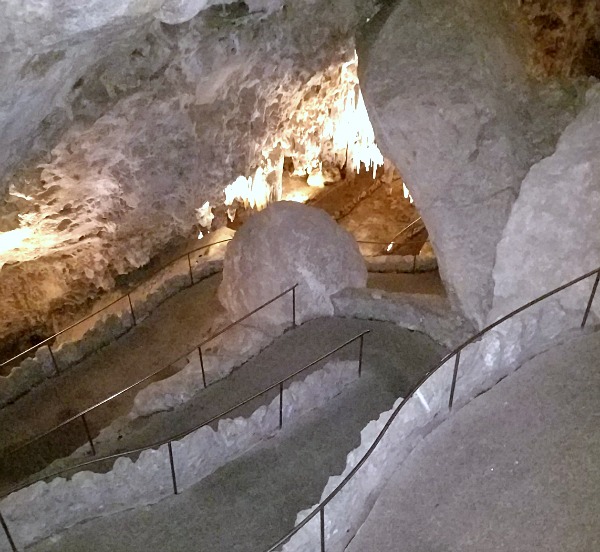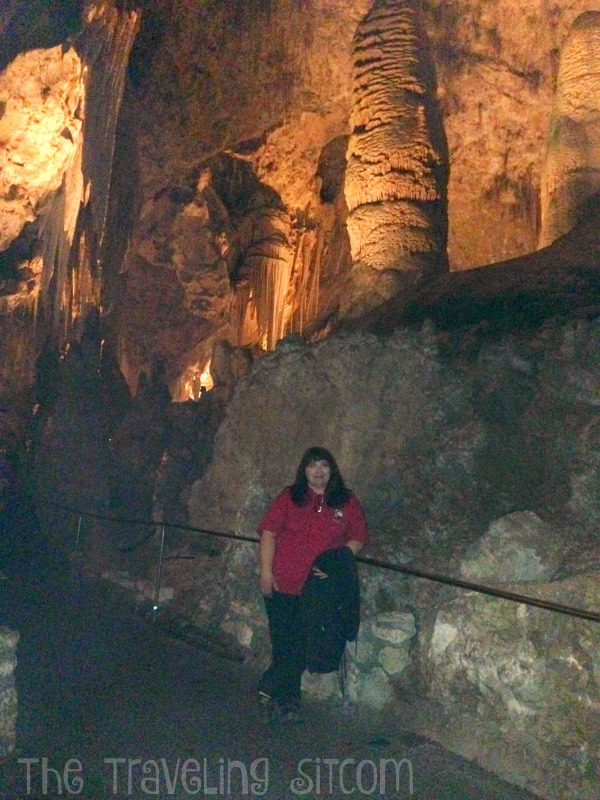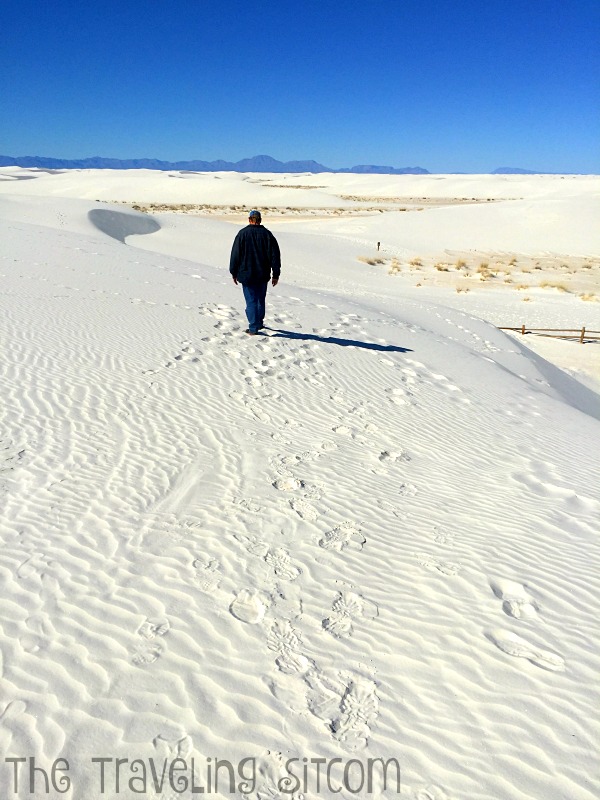We left Tucson in mid March and headed back to our hometown in Georgia for the birth of our granddaughter. On the way, we tried to take the time to visit some great places. Our last stop in New Mexico was Carlsbad Caverns.

Carlsbad Caverns National Park is located in southeastern New Mexico. The primary attraction of the park is the show cave, Carlsbad Cavern, oh, and the bats.

Personally, I’m not a fan of caves. I have claustrophobia and the thought of being hundreds of feet below ground makes my teeth hurt.
But Dave wanted to see this particular cavern because he had heard so much about it. And we certainly couldn’t just drive right by without taking a look.

The entrance includes a large visitor center building that contains a cafeteria, interesting museum, gift shop, and two elevators that can take you down to the caverns below.

It is at this point that you have to make the big decision. Do you want to hike down into the cavern on your own, or take the easy way out and grab the elevator?

We chose to hike down. After all, how difficult could it be? The ranger said that it would take several hours to hike the four mile path down into the caverns. We would end up being 75 stories below ground.

At the entrance to the cave is a huge amphitheater, created for crowds to watch the evening show of up to 300,000 Mexican Free-tail bats as they emerge from the cave in a huge cloud of blackness.
Yes, seriously. There were bats.

The path zig-zags down into the darkness below. Ready for our new adventure, we started the hike. Carlsbad Cavern is the fifth largest cavern in North America and the twenty-eighth largest in the world. And as long as the bats minded their own businesses, we would be perfectly happy to take in the views!


As we descended into the cave, it was amazing to look up at the pathway that we had already traveled. The descent is steep, and honestly if you have bad knees, I wouldn’t recommend it.

It is a steady downward descent for 75 stories. Craziness.

This passageway continues into narrower tunnels where the first extensive collections of stalagmites and stalactites are found, including named features such as Devils Spring, Queen’s Chamber, Kings Palace and the Boneyard.
Note that I am now carrying my jacket. It is surprisingly humid in the caves. I believe it was around 90%. And warm.

The surroundings become steadily more scenic, with small side-caves filled with intricate rock forms.


We stopped often to take photos and small breaks from the walk down. Unlike many caverns that I have visited, Carlsbad was not brightly lit with different colors. They maintained the natural look with low lighting.

The lighting was just enough to enjoy the amazing scenery. Once reaching the bottom of the shaft, you enter the huge Big Room. It is here that you can further explore, visit an underground gift shop, and then make the next big decision.
Do you want to climb all the way back out or take the elevator up?
We chose the elevator. You can feel free to call me a wimp. LOL! As for the caverns themselves, I highly recommend a visit! Amazing rock formations, lots of history, and tons of bats! You can’t go wrong there!






























